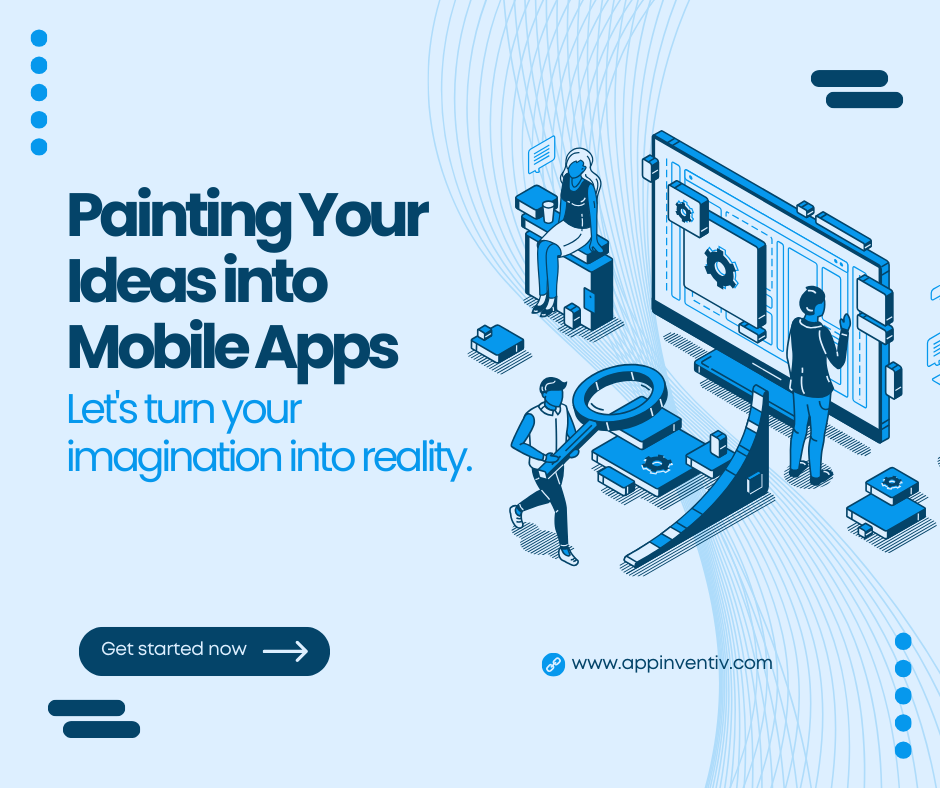In today’s digital landscape, businesses are increasingly turning to generative AI chatbots to enhance customer engagement and streamline operations. These intelligent conversational agents not only provide instant support but also offer personalized interactions, helping organizations meet the diverse needs of their customers. However, building an effective generative AI chatbot requires careful planning and execution, ensuring that the solution aligns with business goals and enhances user experience.
To successfully create a generative AI chatbot, businesses must understand the core components of chatbot development, including natural language processing (NLP), machine learning (ML), and the integration of relevant data sources. Additionally, organizations need to define the chatbot’s objectives, identify target users, and develop a conversation flow that meets user needs. This comprehensive guide will explore the key steps and best practices for building an effective generative AI chatbot that can transform customer interactions and drive business growth.
Understanding Generative AI Chatbots
Generative AI chatbots leverage advanced artificial intelligence and machine learning algorithms to create dynamic and engaging conversational experiences. Unlike traditional chatbots, which rely on pre-defined scripts and rigid responses, generative AI chatbots can understand context and generate unique replies based on user input. This capability allows them to offer more personalized interactions, making them invaluable tools for businesses aiming to enhance customer engagement and streamline operations.
The Business Case for Generative AI Chatbots
The rise of generative AI chatbots is largely driven by the growing need for efficient customer service solutions. In a world where consumers expect immediate responses, chatbots can provide 24/7 support, answering queries and resolving issues in real time. Businesses that implement generative AI chatbots can reduce operational costs, improve response times, and enhance customer satisfaction. Moreover, these chatbots can handle a wide range of inquiries, from frequently asked questions to complex issues, making them versatile assets across various industries.
Key Features of an Effective Generative AI Chatbot
- Natural Language Processing (NLP): NLP is crucial for enabling the chatbot to understand and interpret user queries accurately. By employing advanced NLP techniques, businesses can ensure their chatbots comprehend nuances in language, including idioms, slang, and context.
- Machine Learning: Machine learning algorithms allow chatbots to learn from interactions over time, improving their responses and accuracy. This adaptability helps them provide relevant answers even as user queries evolve.
- Multi-Channel Integration: An effective generative AI chatbot should integrate seamlessly across multiple communication channels, including websites, social media platforms, and messaging apps. This omnichannel presence ensures that users can engage with the chatbot wherever they are.
- Personalization: Personalization is essential for delivering a satisfying user experience. By leveraging user data and preferences, chatbots can tailor responses to individual users, making interactions feel more relevant and engaging.
- Contextual Awareness: Generative AI chatbots should be able to remember past interactions and maintain context throughout the conversation. This capability enables more meaningful and coherent exchanges, ultimately enhancing user satisfaction.
Steps to Build an Effective Generative AI Chatbot
1. Define the Objectives
Before diving into the technical aspects of chatbot development, it is essential to define the objectives of the chatbot. What specific problems do you want it to solve? Are you aiming to improve customer service, generate leads, or provide information? Clearly defined objectives will guide the development process and help you measure success.
2. Identify the Target Audience
Understanding your target audience is crucial for designing an effective generative AI chatbot. Consider the demographics, preferences, and pain points of your users. This information will help you tailor the chatbot’s language, tone, and functionality to meet the needs of your audience effectively.
3. Choose the Right Technology Stack
Selecting the appropriate technology stack is a critical step in the development process. Popular frameworks for building generative AI chatbots include:
- Rasa: An open-source framework that offers flexibility and customization options.
- Dialogflow: A Google-powered platform that simplifies chatbot creation with pre-built models.
- Microsoft Bot Framework: A robust solution for building, testing, and deploying chatbots across multiple channels.
Consider your team’s technical expertise and the specific features you need when choosing the right platform.
4. Design Conversation Flows
Creating intuitive conversation flows is key to ensuring a smooth user experience. Start by mapping out potential user interactions and defining how the chatbot should respond to different inputs. Use decision trees or flowcharts to visualize the conversation paths. Ensure that the flows are logical, user-friendly, and cover various scenarios that users may encounter.
5. Implement Natural Language Processing
Integrating natural language processing capabilities is crucial for enabling the chatbot to understand and interpret user queries effectively. Leverage existing NLP libraries and tools such as NLTK, spaCy, or Hugging Face Transformers to build the underlying language models. These tools will help the chatbot recognize intent, extract entities, and analyze sentiment, ultimately improving its responsiveness and accuracy.
6. Incorporate Machine Learning
To create a truly effective generative AI chatbot, you’ll want to implement machine learning algorithms that allow it to learn from past interactions. By analyzing user feedback and conversation patterns, the chatbot can continuously refine its responses and improve user satisfaction. Consider utilizing techniques such as reinforcement learning or supervised learning to enhance the chatbot’s performance over time.
7. Ensure Multi-Channel Compatibility
For maximum reach and engagement, your generative AI chatbot should be compatible with multiple communication channels. This may include your website, social media platforms, and messaging apps like WhatsApp, Facebook Messenger, or Slack. Implementing a multi-channel strategy will ensure that users can interact with the chatbot in their preferred environment.
8. Personalize User Interactions
Personalization is a critical aspect of enhancing user experience. By collecting and analyzing user data, you can tailor responses to individual users based on their preferences, history, and behavior. Implement features that allow the chatbot to remember past interactions and personalize its responses accordingly. This will create a more engaging and satisfying experience for users.
9. Conduct Rigorous Testing
Before launching your generative AI chatbot, conduct rigorous testing to identify any potential issues or areas for improvement. Test the chatbot’s performance across different scenarios and user inputs, ensuring it can handle various queries effectively. Gather feedback from beta users to gain insights into the chatbot’s strengths and weaknesses, and make necessary adjustments before the official launch.
10. Monitor Performance and Gather Feedback
Once your generative AI chatbot is live, it is essential to continuously monitor its performance and gather user feedback. Utilize analytics tools to track key metrics, such as response times, user engagement rates, and customer satisfaction scores. Regularly review this data to identify trends and areas for improvement. Encourage users to provide feedback on their experiences, and use this information to make iterative enhancements to the chatbot.
Best Practices for Ongoing Improvement
1. Continuously Update and Train the Model
To ensure your generative AI chatbot remains effective, it is crucial to continuously update and train the underlying model. As language evolves and user preferences change, the chatbot must adapt to remain relevant. Regularly retrain the model with new data and interactions to enhance its accuracy and responsiveness.
2. Invest in User Education
While generative AI chatbots are designed to be user-friendly, some users may still require assistance in navigating the chatbot. Consider creating educational resources, such as guides or video tutorials, to help users understand how to interact effectively with the chatbot. Providing clear instructions can enhance user satisfaction and reduce frustration.
3. Leverage User Insights for Future Development
User feedback is invaluable for the ongoing development of your generative AI chatbot. Regularly review user insights to identify common pain points or frequently asked questions that the chatbot may not address adequately. Use this information to inform future enhancements and feature updates, ensuring the chatbot continues to meet user needs.
4. Stay Informed About Industry Trends
The field of generative AI is rapidly evolving, with new technologies and trends emerging regularly. Stay informed about industry developments and advancements in AI and machine learning to ensure your chatbot remains cutting-edge. Attend industry conferences, webinars, and workshops to learn about the latest tools, techniques, and best practices for generative AI chatbot development.
5. Foster Collaboration Between Teams
Building and maintaining an effective generative AI chatbot often requires collaboration between different teams, including IT, marketing, customer support, and product development. Foster open communication and collaboration among these teams to ensure the chatbot aligns with broader business objectives and delivers a seamless user experience.
Conclusion
Building an effective generative AI chatbot requires a strategic approach that focuses on user experience, advanced technology, and continuous improvement. By leveraging natural language processing and machine learning, businesses can create chatbots that not only understand user intent but also adapt to evolving customer needs. Additionally, defining clear objectives and integrating relevant data sources can enhance the chatbot’s ability to provide valuable insights and support.
As organizations continue to explore the potential of generative AI chatbots, it is crucial to prioritize user feedback and performance metrics to refine the chatbot over time. Embracing an iterative development process ensures that the chatbot remains effective and relevant, ultimately leading to improved customer satisfaction and increased operational efficiency. By investing in the right tools and strategies, businesses can harness the power of generative AI chatbots to create meaningful interactions and achieve their goals.
FAQs
1. What is a generative AI chatbot?
A generative AI chatbot is an advanced conversational agent that uses artificial intelligence and machine learning to understand user inputs and generate contextually relevant responses, providing personalized interactions.
2. What are the key components needed for chatbot development?
Key components include natural language processing (NLP) for understanding language, machine learning for improving responses, a user-friendly interface, and integration with relevant data sources for providing accurate information.
3. How can I ensure my chatbot meets customer needs?
To ensure your chatbot meets customer needs, conduct user research, define clear objectives, design intuitive conversation flows, and gather feedback for continuous improvement.
4. What technologies are commonly used in building generative AI chatbots?
Common technologies include natural language processing frameworks (e.g., spaCy, NLTK), machine learning platforms (e.g., TensorFlow, PyTorch), and chatbot development platforms (e.g., Rasa, Dialogflow).
5. How do I measure the effectiveness of my chatbot?
You can measure chatbot effectiveness through performance metrics such as user engagement rates, resolution times, customer satisfaction scores, and retention rates, along with collecting user feedback for ongoing enhancements.



